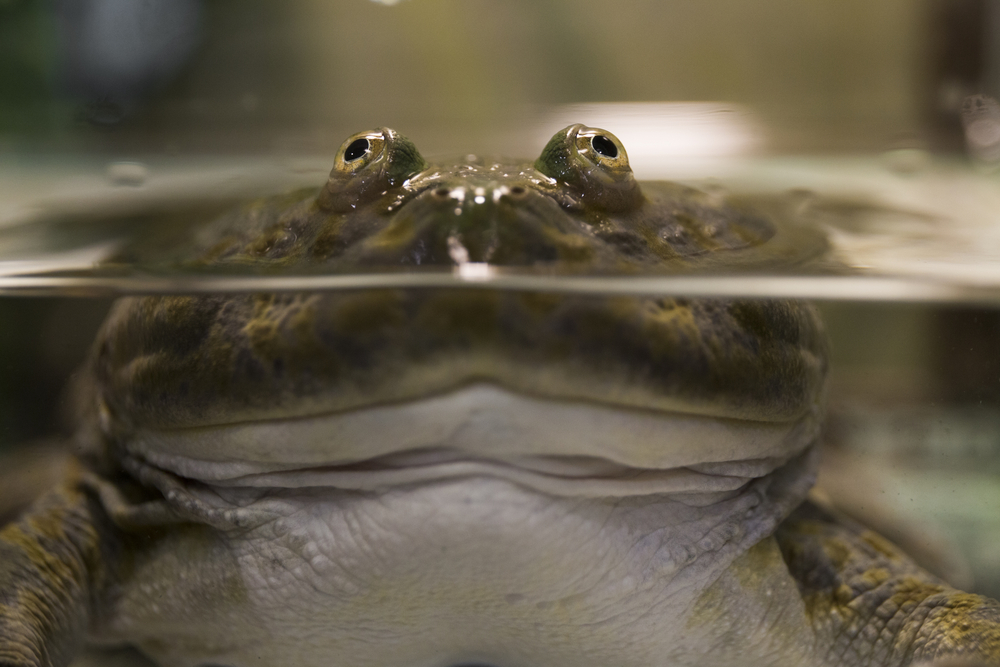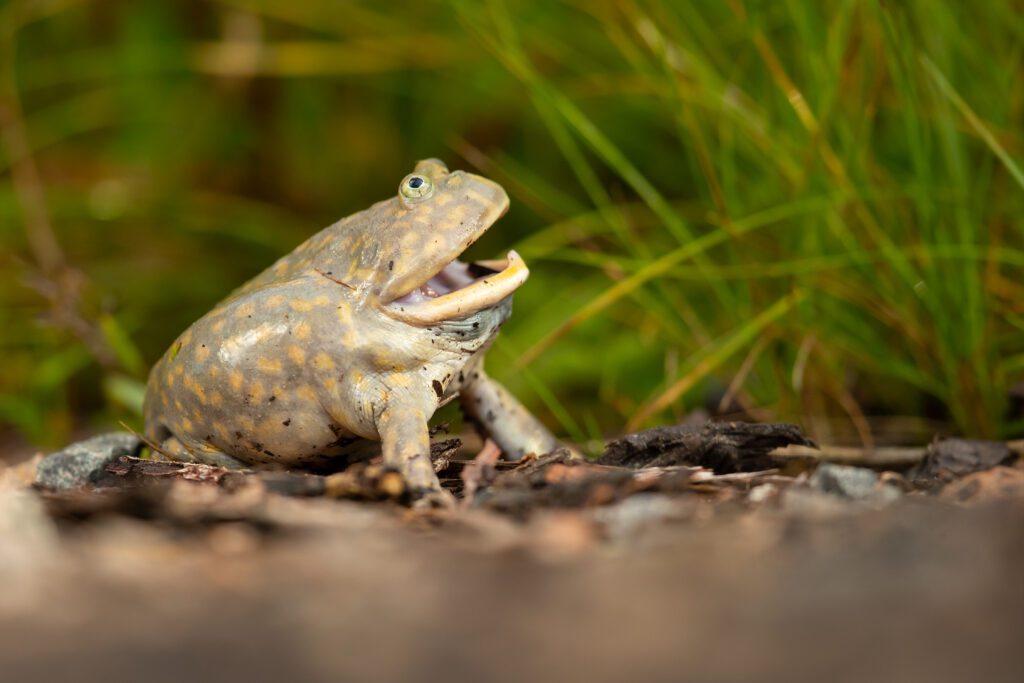There are three species of Budgett’s frogs (Lepidobatrachus sp.), all of which have been available in the hobby at some point. L. laevis is the most readily available while L. asper has been scarce for a good number of years. Visually, identifying the three species is quite straightforward and it is easy to work out which species is which.
Budgett’s frogs fall into the same family as the Pacman frogs and occupy a similar habitat. These species come from the Chaco which spreads across Northern Argentina, Brazil and Paraguay. The Chaco grasslands are seasonally flooded for much of the year, before drying out completely for the remainder of the year. During this dry season, the frogs will burrow down into the earth and return with the rains.
As the wet season arrives and these frogs resurface, they become explosive breeders. They will produce huge amounts of spawn which develop into voracious tadpoles. These tadpoles will eat and grow as fast as possible in a race to metamorphose. This extends beyond the development cycle as they predate each other and eat everything they can before the arrival of the next dry season.

Keeping Budgett’s frogs successfully in captivity
Once we understand the natural history of the Budgett’s frog, all the clues are there for successful captive keeping. Keepers should provide an adaptive environment between 20°C (night) and 28°C (day) with a shallow water section and some terrestrial space. This would work particularly well in a naturally planted paludarium, where the frog can part-submerge in the shallow water, but peer above the floating plants ready to ambush its prey. Unless breeding, we should avoid drying the enclosure out completely. Taking away the extremes of an animal’s wild conditions is advised. Just because the animal can endure the extreme does not mean they enjoy it.
Prey items should be comprised mostly of typical feeder insects. Crickets and locusts are ideal as they will cling to cork bark in the aquatic section, as opposed to mealworms which are susceptible to drowning. A defrosted pinkie mouse can also be fed every couple of weeks providing care is taken with the tweezers to avoid damage to the frog’s mouth. Pinkie mice are also very rich in fat and high in protein so should be reserved as a treat.
